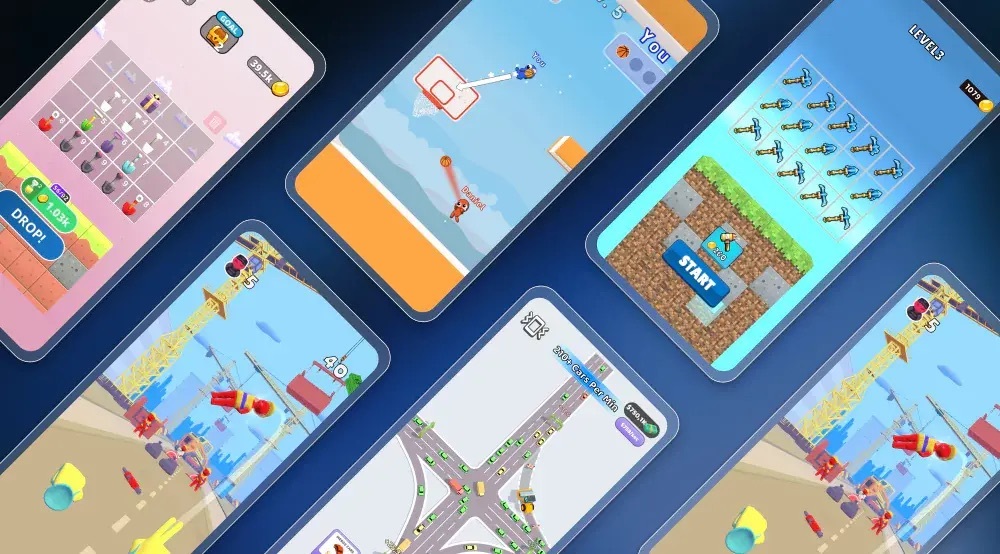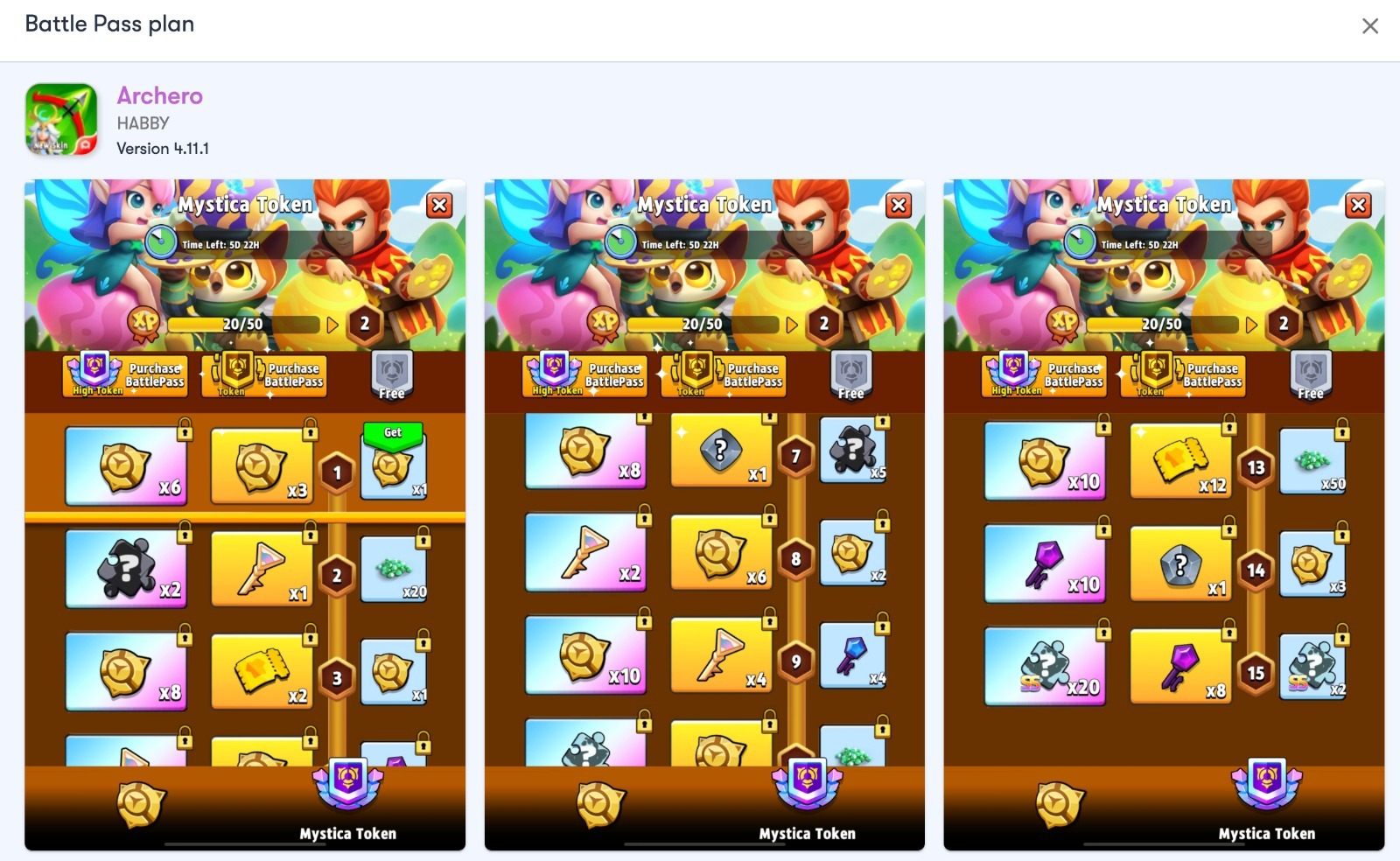If you’ve found success with a hyper-casual game, it might be time to level up. While there's growing chatter about the decline of hyper-casual games, transitioning to a hybrid-casual model could be the key to keeping your game relevant and profitable.
Hyper-casual games are great for grabbing attention with their simple, addictive mechanics, but they often struggle to have long-term retention or generate significant revenue. Hybrid-casual games, on the other hand, combine the best of both worlds: the quick, easy-to-learn gameplay of hyper-casual games with deeper, more engaging elements that encourage players to stick around, return often, and even make in-game purchases.
This balanced approach not only enhances player retention but also unlocks new revenue opportunities, helping you build a more sustainable and profitable game.

1. Suggestions to Transform Your Game
Invest in Player Analytics
The depth of hybrid-casual games means there’s a lot more data at your disposal. Use it wisely.
- Behavioral Insights: Track player behaviors, key metrics like session durations, and drop-off points to understand what engages them and where potential frustrations lie. Identify the elements that players love and where they tend to drop off. This data can provide essential insights for your hybrid-casual development.
- Customized Player Experiences: With rich data, you can tailor experiences, offer personalized in-game offers, or even dynamically adjust difficulty levels based on player behavior. Utilize dynamic ad monetization to optimize revenue by delivering targeted ads based on segmented player profiles.
Keep the Core Gameplay Intact
The journey from hyper-casual to hybrid-casual starts with a solid understanding of your game’s core. What makes your hyper-casual game fun? Is it the intuitive controls, the fast-paced challenges, or perhaps the satisfaction of beating a high score?
Hold onto that core because it’s what brought players in the first place. Keep the essence intact, but think about what additional elements could make the game richer and more engaging without complicating the gameplay.
Introduce Progression Systems and Meta-Game Elements
To enhance player engagement as you transition from hyper-casual to hybrid-casual, implement the following strategies:
Progression Systems
- Levels: Structure your game into increasingly challenging stages instead of a single endless loop.
- Character Development: Allow players to level up characters by earning experience points.
- Upgrades: Introduce upgrades for tools and abilities to keep gameplay exciting.
Meta-Game Elements
Daily Missions & Weekly Challenges: Provide specific goals and rewards to encourage regular log-ins.
- Collectibles & Customization: Offer skins and collectibles to foster ownership and incentivize in-app purchases (IAP).
- In-Game Economy: Create a system for unlocking or purchasing items, opening new revenue streams.
- Leaderboards & Competitions:Add competitive features that drive social engagement and boost IAP behavior.
Combining progression systems with meta-game elements fosters deeper player engagement and increases retention while providing multiple monetization opportunities.
Diversify Your Monetization Strategy
As your game evolves, your monetization strategy should too. In a hybrid-casual game, monetization isn't just about showing ads. Now, It’s about striking a balance between ads and in-app purchases.
- Ads can still play a role, but consider making them optional or rewarding — a player might choose to watch a video ad to earn extra currency or speed up their progress.
- In-app purchases can offer players more meaningful ways to spend, like exclusive content, rare items, or premium currency.
- Subscription model to enjoy an ad-free experience or gain access to special rewards.

Source: GameRefinery
"Hybrid Casual Puzzle games are scaling immensely. New innovative puzzle core gameplay tested out for low CPI + monetizing with Ads + best proven IAP-tactics from puzzle games (extra moves, boosters, etc.). Later scaling the product by adding live events to support the core gameplay (proven best practices from e.g Match3). The events create small/medium term progression vectors for players to feel more engaged. Screw Jam from Rollic Games is one of the multiple examples we've seen in break into the charts in the past months using the same tactics (Hexa Sort, Seat Away, etc.)"
Erno Kiiski - Chief Game Analyst at GameRefinery
2. Boost Engagement with LiveOps
As you transition your game from hyper-casual to hybrid-casual, implementing LiveOps (Live Operations) is an excellent strategy to keep your player base engaged and continuously entertained. LiveOps involves managing and optimizing your game in real time, adding new content, events, or features regularly to keep the experience fresh and dynamic.
By integrating LiveOps, you encourage players to return frequently, driven by the fear of missing out on unique content or exclusive rewards. Imagine adding a weekly tournament or a weekend-only event that offers rare collectibles or valuable upgrades — these dynamic elements can significantly increase engagement and retention. LiveOps is like having a continuous conversation with your players, making sure they are always excited and invested in the game.
Here are some useful LiveOps tools and backend systems that you can benefit from:
3. Aligning LiveOps with Appnava’s Predicted Segmentation
To maximize the effectiveness of your LiveOps strategy, consider utilizing Appnava's predicted segmentation capabilities.
The best examples of predictive segmentation include “likelihood to purchase” and “likelihood to churn” segments. While “likelihood to purchase” aims to segment customers based on their future high probability of purchasing your products, “likelihood to churn” identifies users who are more prone to exiting your business. By leveraging these predictive segments, you can fine-tune your LiveOps strategy to actively engage potential buyers while implementing retention strategies for those at risk of churning.
By analyzing player behavior and preferences, you can tailor LiveOps initiatives to meet the specific needs of different segments. Here’s how to align your LiveOps with segmentation:
- Personalized Rewards: Leverage segmentation insights to offer personalized rewards that resonate with different player profiles. This could mean providing exclusive items to high-engagement players or tailored offers for those who may need a nudge to return. Check out how you can dynamically reward and monetize your players.
- Dynamic Content Updates: Utilize player segmentation to determine which content updates will have the most significant impact. Focus on releasing features that cater to the preferences of your most active segments, ensuring that updates feel relevant and engaging
- Targeted Events: Use segmentation to identify player groups that are most likely to engage with specific types of events. For example, if certain players enjoy competitive gameplay, organize tournaments that appeal directly to that segment
Test, Iterate, and Optimize Continuously
The transition to hybrid-casual isn't a one-and-done move; it requires continuous testing and iteration
Beta Testing: Launch your game to a limited audience initially. Collect feedback, identify pain points, and make necessary refinements.
A/B Testing: Experiment with monetization strategies, various gameplay mechanics, or storyline elements to determine what resonates best with your audience.
Regular Updates: After launch, commit to providing regular updates to keep content fresh and address any player-reported issues.

Source: GameRefinery
4. Learning from Success: A Real-World Example
Consider the story of “Archero” by Habby. What began as a simple game with one-touch mechanics soon grew into a hybrid-casual success. The developers retained the core simplicity — players still dodge enemies and fire arrows with a single tap — but they layered on progression elements like equipment upgrades, character abilities, and daily missions. These additions turned “Archero” from a fleeting diversion into a game players couldn’t put down. This shift helped "Archero" increase retention rates, generate more revenue, and stand out in a crowded market.

Source: GameRefinery
5. Ready to Make the Shift?
Making the leap from hyper-casual to hybrid-casual can be a game-changing strategy for developers looking to create longer-lasting and more profitable titles. By enhancing your game with progression systems, meta-game elements, diverse monetization strategies, and a refined user experience, you can transform your game into something truly memorable for players.
6. How AppNava can help you with your hybrid casual game?
- In-Depth Player Behavior Analysis: Player behavior is examined to create detailed user segments, enabling developers to target their audiences more effectively. This process includes understanding “churn” and “drop-off” reasons through actionable signals, allowing for the identification of disengagement factors and the implementation of strategies to improve retention.
- Higher Engagement: Encourages longer play sessions through progression systems and meta-game elements, boosting overall engagement.
- Predictive Segmentation: Generates segments like "likelihood to purchase" and "likelihood to churn," helping optimize marketing strategies.
- Personalized Experiences: Offers personalized in-game offers and content, increasing player engagement and retention.
- Real-Time Optimization: Enables immediate updates through LiveOps strategies by analyzing in-game performance in real time.
- Revenue Growth: Enhances in-app purchase (IAP) behaviors through advanced user segmentation and personalized offers, leading to increased revenue.
AppNava’s user level predictions on IAP probability, retention, LTV and subscription provide you the ultimate insight and flexibility on monetizing your players in the right way towards the goal of maximizing your revenue. Knowing each user’s IAP probability and LTV as early as the first session, you can adjust the ad monetization, reward system and bundles accordingly. This not only maximizes your revenue per user, but also helps you retain your users and keep them coming back for a game economy that makes them happy.
Contact us to discuss further and start your user level dynamic monetization and retention approach with AppNava’s ML powered predictions!



